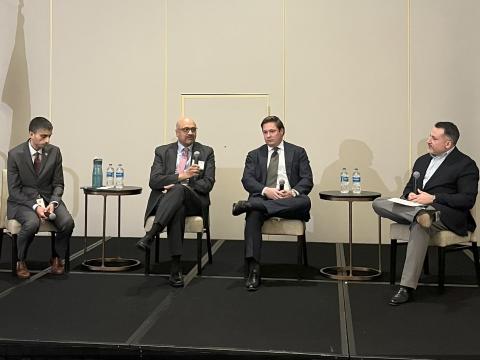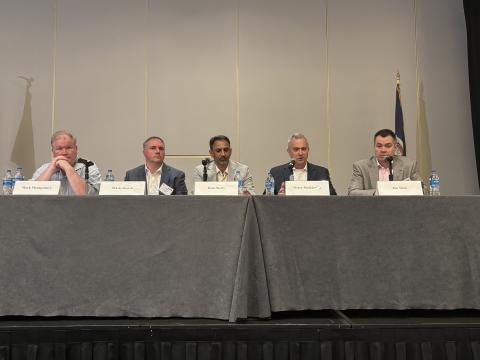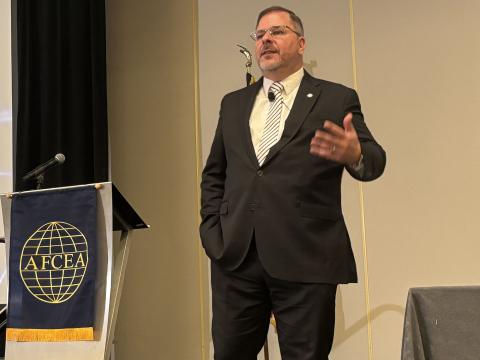The Pace of Change Accelerates
The transformation that is redefining our military, far from slowing down, is actually gaining speed as it reaches into every corner of military affairs. If we measure the success of military transformation by the rate of positive change, then we have done more to improve the way we fight over the past four years than was achieved over the previous 213.
Yet, this transformation is only the latest in a series of changes that define the history of the U.S. military. The defense community has been changing at various intervals for all of its 217-year history. What makes the ongoing transformation truly a revolution in military affairs is that, unlike earlier changes, it comes from within.
In 1787, the U.S. Constitution authorized Congress to raise and support an army and to provide and maintain a navy. The role and objective of the new U.S. Army was to fight other nations’ armies, and the U.S. Navy was given the task of fighting foreign navies. When not actually engaged in foreign conflict, half of the admirals and generals moved to Washington, D.C., where the Army and the Navy fought each other to increase their total obligational authority.
The United States maintained that same organization—and the technologies that were developed by that organization—through 1947. The thought was, “Why Change? We are winning wars.” Congress, recognizing that this model was not ideal for the post-World-War-II environment, reorganized the defense community through the 1947 National Security Act.
From 1787 through 1947, to fight a war the services mainly deconflicted. Later, during the 1964-1973 Vietnam War, the United States still ran a deconflicted campaign, but with disappointing results. Meanwhile, the Army, Navy, Air Force and Marine Corps continued the tradition of fighting each other inside the beltway to increase their own capabilities.
This continued until 1986, when a frustrated Congress passed the Goldwater-Nichols Act. A major driver for this legislation was the services’ failure to make the progress into the joint arena that had been envisioned 39 years before. This act effectively directed jointness to occur.
The end of the Cold War in 1991 and the collapse of its monolithic threat gave way to the rise of a multiple menace. For the first time in U.S. history, the country transitioned from focusing on fighting a single dragon to determining how to fight a new hydra-headed monster.
The changes that occurred from 1986 to 2001 were dramatic. More than 200 years of deconfliction gave way to a coordinated fight in the 1991 Gulf War. Officers who fought in Vietnam, schooled by Goldwater-Nichols, resolved never to repeat the mistakes of that “deconflicted” conflict, and instead used their higher ranking positions in 1991 to coordinate joint forces. This permitted the U.S. Central Command to reap many benefits of Goldwater-Nichols only five years after its passage.
Those higher ranking officers in the first Gulf War became the generals and admirals in operations Enduring Freedom and Iraqi Freedom. They applied their expertise to make these two most recent wars integrated operations. The services and the special operations forces worked together as never before. In effect, these military leaders spanned the transition from deconflicted services through coordinated services to integrated services.
The most effective motivation to transform is internal recognition of a requirement to change. That is what is happening in the military today. And, the timing is right. Had we tried to build this kind of joint force a little over a decade ago, we would have been less successful because we did not have the technological prowess to fully network the force. Today, we have the technology to allow this to occur.
Transformation involves technology, culture and process. In addition to technology, the culture also has changed. Again, the Vietnam veterans who moved up the ranks resolved never to fight that way again.
The process has changed as well. Instead of waiting for Congress to issue directions, the U.S. Defense Department took the initiative and began its own internal revolution. The internal thrust for change was embraced more enthusiastically and produced more rapid results than if it had come from Congress.
These aspects bode well for the future. The next steps that we may see will involve interoperable capabilities for coalition-building. We have made great progress in transformation among U.S. forces, but the key to success for global security lies in coalition transformation leading to interoperable command and control systems, training and platforms.
The success of the two recent wars in Afghanistan and Iraq has made the need to transform crystal clear. The rate at which we are transforming the services to fight the hydra-headed monster continues to accelerate geometrically. Now, we need to extend it to our partners in peace. The hydra-headed monster has much to fear.




Comments